|
Home |
|
Rockets
|
|
|
|
Launchers
|
|
|
| Spout |
| Reduced Nozzle diameter (11.8mm) |
|
|
|
|
Launch sequence pics
|
|
|
|
|
| Virtual |
| Computer graphics and animation |
|
|
Stuff
|
|
|
|
Events
|
|
|
|
|
|
1. |
Introduction |
| |
The launcher holds the rocket with the friction that is created between the cork and the inner side of the bottle opening. When air is pumped into the bottle the pressure rises up to a point when the friction cannot hold the rocket and it is launched. Typically launch pressure is around 2 atm. (30 psi).
A rocket suitable for this launcher must meet 2 conditions:
- The rocket has to be able to support itself in launch position, such as the
skewer design.
- The fins must allow space for your hand to come close enough to the bottle's
opening to force the cork inside the bottle.
Sadly, there is no known correlation between the quality of the wine in and the cork's performance.
A Skewer Design launched on this launcher can reach a height of 25 m (85 ft).
|

|
|
2. |
Materials and equipment |
| 2.1 |
A cork that fits your bottle:
The requirement is that the cork can be forced into the opening of the bottle. There is a trade-off here: A very tight fit will require a larger force and increase the launch pressure (good) but there is a point where the force may be too large and damage the rocket.
|
| | |
| 2.2 |
L shape tube with 6 mm diameter. If this is not found in the hardware store
near you a bent 1/4" copper tube works very well.
|
| | |
| 2.3 |
Flexible tube with 6 mm inner diameter, about 3 meters is good.
|
| | |
| 2.4 |
A tire valve, stripped from the surrounding rubber (I use a blow torch). Extract the one-way valve from it leaving just the outer piece. This is for safety, in case you need to abort the launch disconnecting the air supply will allow the water to exit.
|
| | |
| 2.5 |
Thick electrical wire striped of it's insulation. 2 pieces about 10 cm (4 inch) each.
|
| | |
| 2.6 |
A 5.5 mm diameter drill.
|
| | |
| 2.7 |
A vise.
|
| | |
| 2.8 |
Pliers.
|
| | |
| 2.9 |
A decent bicycle pump.
|
 |
|
3. |
Construction |
| 3.1 |
Drill 5.5 mm hole in cork:
Quick method - clamp the drill in the vise in horizontal position and rotate the cork by hand on the drill. Try to keep the cork aligned with the drill but don't worry if the hole is not exactly in the center of the cork. A large nail can be forced through the cork prior to drilling to create a guide through the cork's granularity.
Exact method - use an electric drill with guide. Make sure not to squeeze the cork out of it's roundness
|
| | |
| 3.2 |
Insert one leg of the L shape in cork. Make sure that you are not inserting it in the end that fits into the bottle.
|
| | |
| 3.3 |
Fit the flexible tube on the other leg of the L shape and twist one of the electrical wires around the tube to secure it. Insert tire valve in other end of tube and twist the second electrical wire around it.
|
| | |
| |
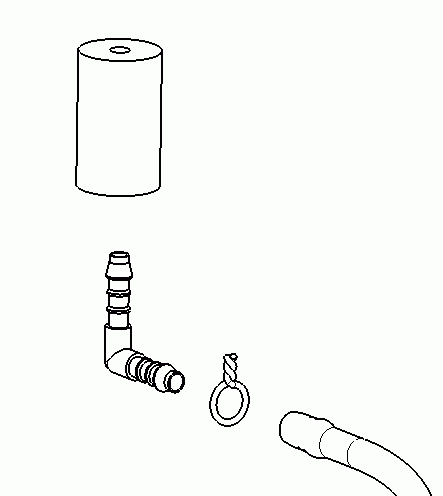
|
| |
Fig 1: cork side, exploded view |
| | |
| |
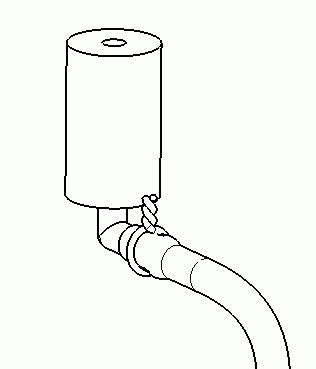
|
| |
Fig 2: cork side, assembled view |
| | |
| |
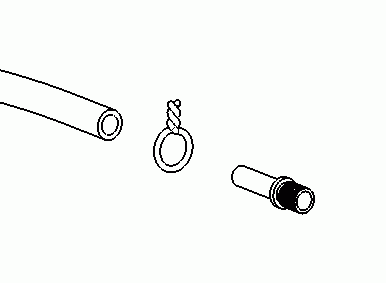
|
| |
Fig 3: valve side, exploded view |
| | |
| |
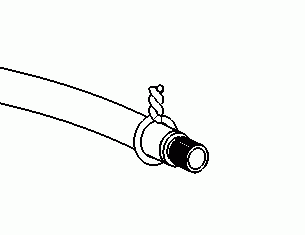
|
| |
Fig 4: valve side, assembled view |
| | |
| |
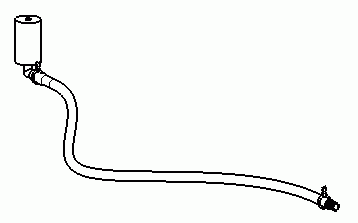
|
| |
Fig 5: assembled launcher |
 |
|
4. |
Launching |
| 4.1 |
Connect bicycle pump to tire valve.
|
| | |
| 4.2 |
Fill 1/3 of the rocket with water while the rocket is pointing down.
|
| | |
| 4.3 |
Force the cork into the bottle opening.
|
| | |
| |
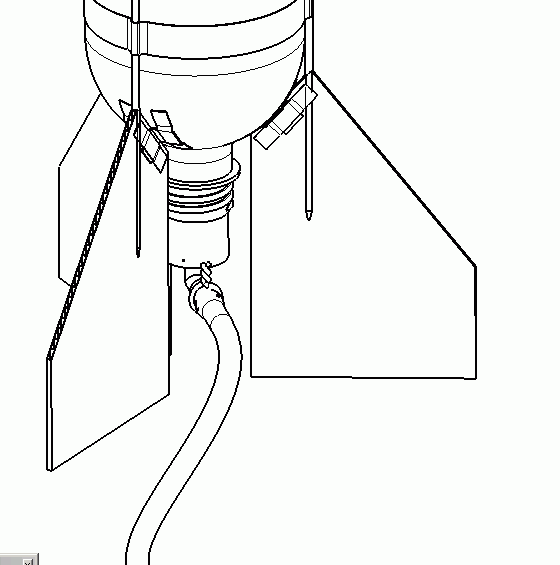
|
| |
Fig 6: Cork in bottle |
| | |
| 4.4 |
Place rocket in launch position. Extend tube to maximum length and pump
(Launch will occur at about 2 atm.).
|
| | |
| |
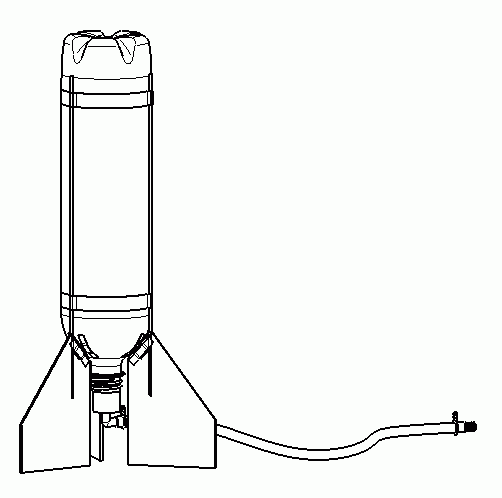
|
| |
Fig 7: rocket in launch position |
 |
|
|
|